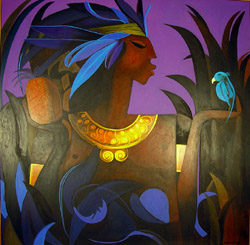
Taíno Indians, a subgroup of the Arawakan Indians (a group of American Indians in northeastern South America), inhabited the Greater Antilles (comprising Cuba, Jamaica, Hispaniola [Haiti and the Dominican Republic], and Puerto Rico) in the Caribbean Sea at the time when Christopher Columbus’ arrived to the New World.
Haitian art has a rich history that dates back well before the arrival of slave ships and Columbus in 1492. The Taino Indians created marvelous paintings on cave walls and their naked bodies, as well as colored graphics on the walls of their huts, contributing to the formation of the Haitian painting tradition. This tradition was further developed in the world wind of Saint Domingue, where talented artists created exceptional works. Haitian painting reached its first peak during the governments of Christophe, Petion, Boyer, and Soulouque, where painters such as Thimoleon Dejoie, Numa Desroches, and the father-son duo of Colbert Lochard and Archibald Lochard flourished.
Despite political instability, economic stagnation, and the rise of photography and chromolithography, artists such as Louis Rigaud, Edward Goldman, and Lorvana Pierrot Lagojunis distinguished themselves during a challenging period. A revival of Haitian painting occurred in the 1930s with the formation of the “Ecole Indigeniste,” which included Petion Savain, Georges Ramponneau, Edward Preston, and Antoine Derenoncourt, and led to the creation of the “Centre d’Art” in 1944 by American English teacher Dewitt Peters, who discovered many talented artists, including Hector Hyppolite, Philome Obin, Castera Bazile, Rigaud Benoit, Prefete Duffaut, Jacques E. Gourgue, Wilson Bigaud, and Louverture Poisson.
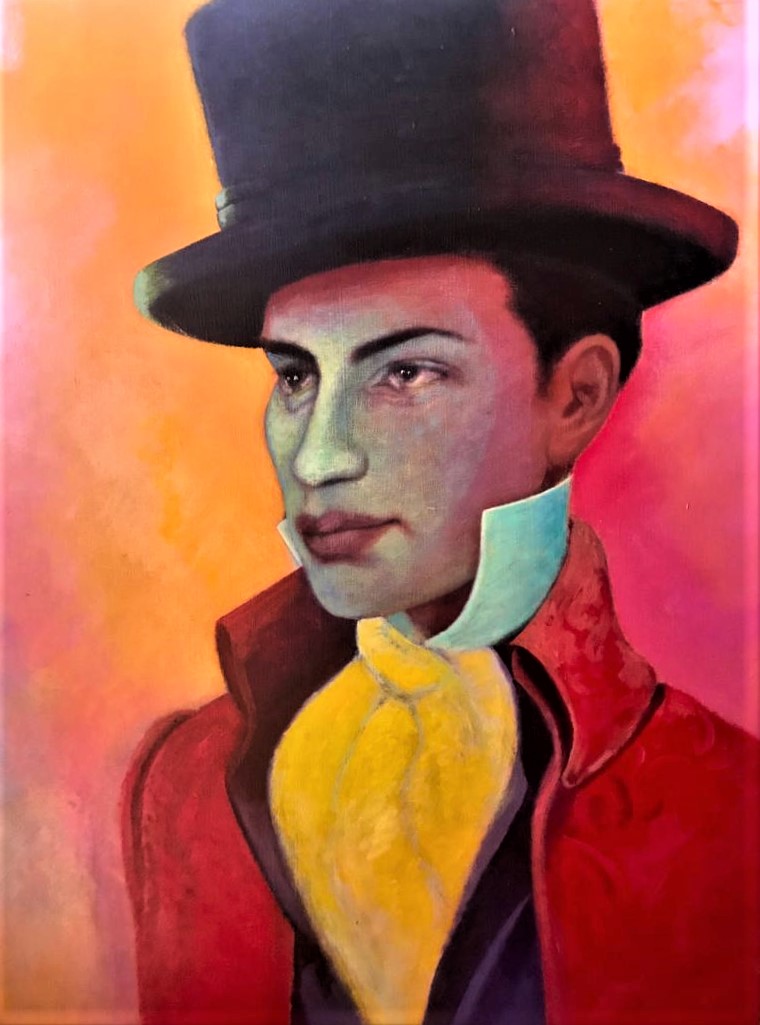
In 1950, artists Lucien Price, Max Pinchinat, and Dieudonne Cedor left the Centre d’Art to create the “Foyer des Arts Plastiques,” where the “Realisme of Cruaute” was developed by Cedor, Nehemy Jean, Denis Vergin, and Denis Emile. The “Galerie Brochette” was also established by Roland Dorcely, Cedor, and Luckner Lazard. Haitian painting became more aware of purely aesthetic standards, taking a more intellectual and modern approach with artists such as Spencer Depas, Villard Denis (Davertige), Jacques Gabriel, and Gerard Hyppolite. The last great association of Haitian artists, Calfou, was founded in the early 1960s, where Bernard Wah’s paintings took a decisive turn toward the “Esthetique de la Beaute,” a school that broke from l’Indigenisme and became more formal and less socially engaged.
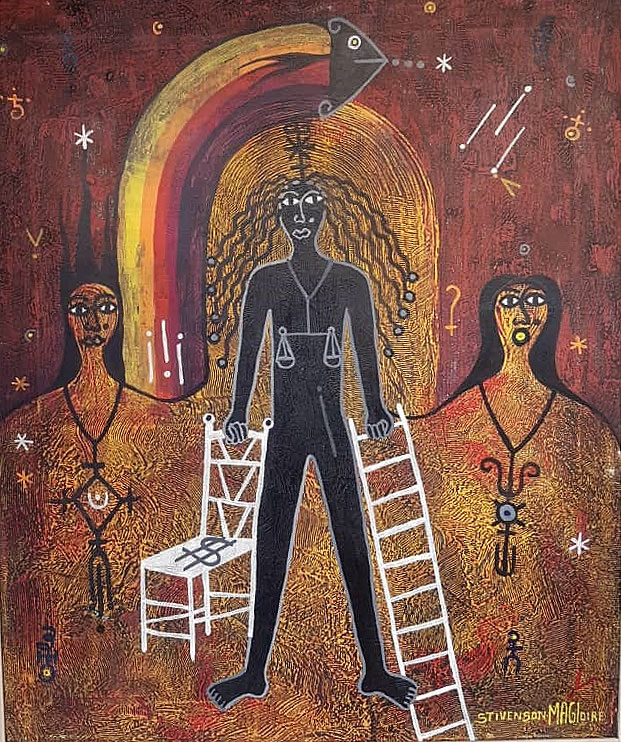
In addition to artists from the “Ecole de la Beaute,” other notable artists include Ronald Mews, Celestin Faustin, Edward Duval Carrie, Tiga, Herve Thelemaque, and Wilfrid Daleus, whose styles are unique and eye-catching. During the 60s, Tiga and Maud Guerdes Robard founded the Saint Soleil post-naive school of Haitian painting, which drew the eye of French author Andre Malraux. This movement produced such painters as Louisianne St Fleurant, St Jean, Prospere Pierre-Louis, Dieuseul Paul, Levoy Exil, and Denis Smith. Finally, it is worth mentioning the incomparable statement of primitive art made by Stivenson Magloire within this trend. Haitian art has come a long way, and the various styles and movements have all contributed to its unique and dynamic character.
©By Gregory Martineau
Haiti is a country rich in culture and history, with a vibrant art scene that reflects its unique traditions and influences. Haitian art is characterized by bold colors, intricate designs, and a strong connection to the country’s African and Creole heritage. With the rise of e-commerce and online marketplaces, it’s easier than ever to discover and collect Haitian art. In this article, we’ll explore some of the most renowned Haitian artists and highlight a few affordable pieces that are perfect for starting a collection.
Renowned Haitian Artists:
Hector Hyppolite (1894-1948) – Hyppolite is widely regarded as one of the most important Haitian artists of the 20th century. His work combines elements of voodoo, Christianity, and folklore, with bright colors and bold brushstrokes.
Philomé Obin (1892-1986) – Obin was a self-taught artist who focused on depicting Haitian life and history. His paintings often feature scenes of everyday life in rural Haiti, as well as historic events such as the Haitian Revolution.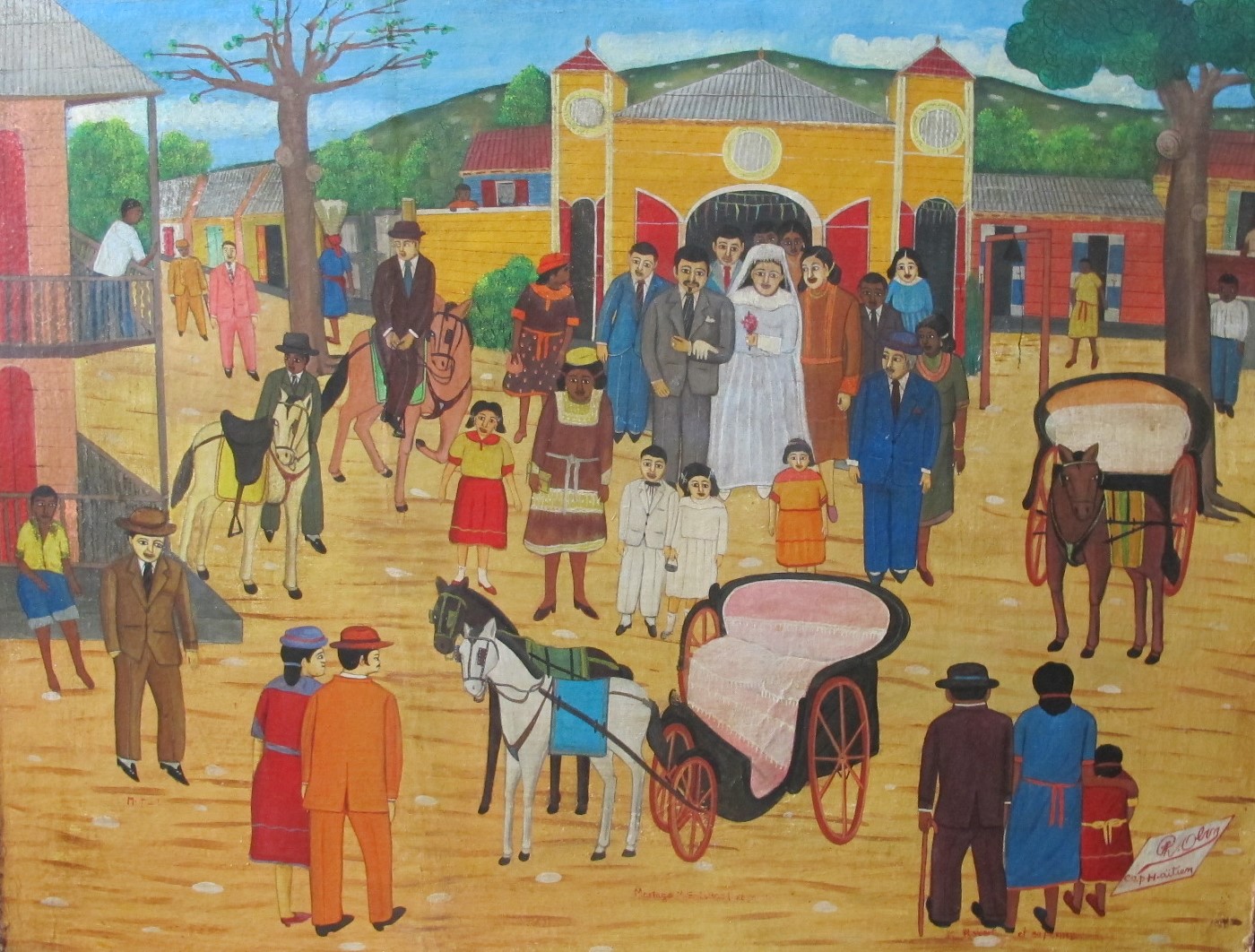
Préfète Duffaut (1923-2012) – Duffaut’s work is characterized by its intricate designs and use of natural elements such as leaves and branches. He often depicted scenes from Haitian folklore and mythology.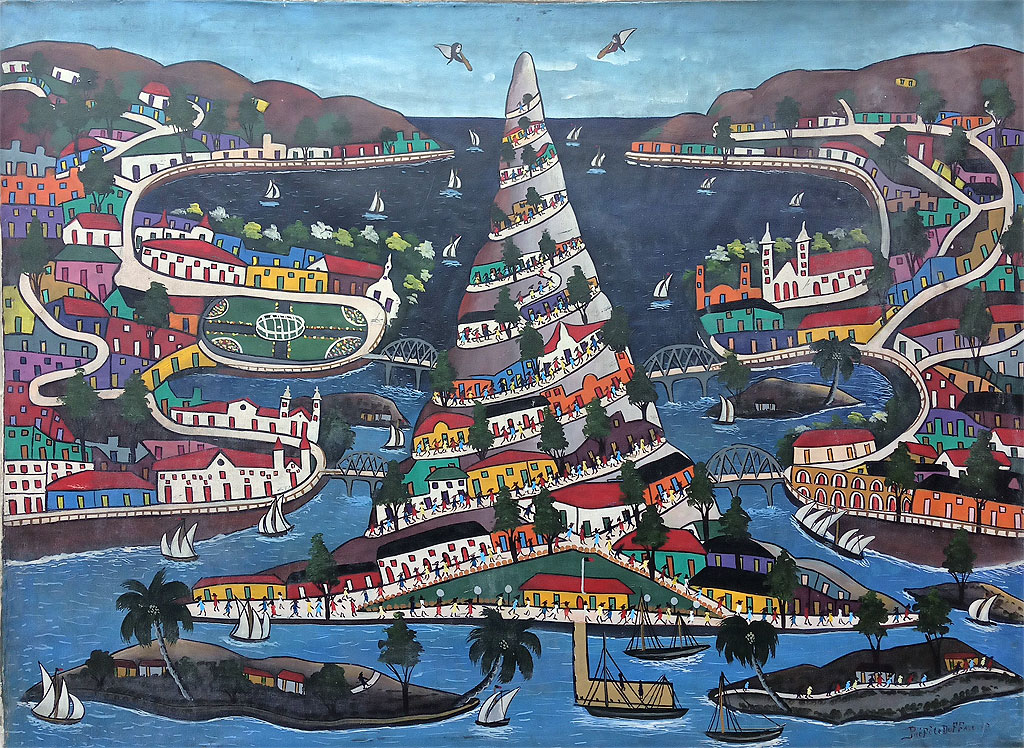
Edouard Duval-Carrié (b. 1954) – Duval-Carrié is a contemporary Haitian artist who works in a variety of media, including painting, sculpture, and installation. His work often explores themes of identity and history, with a particular focus on Haiti’s complex cultural heritage.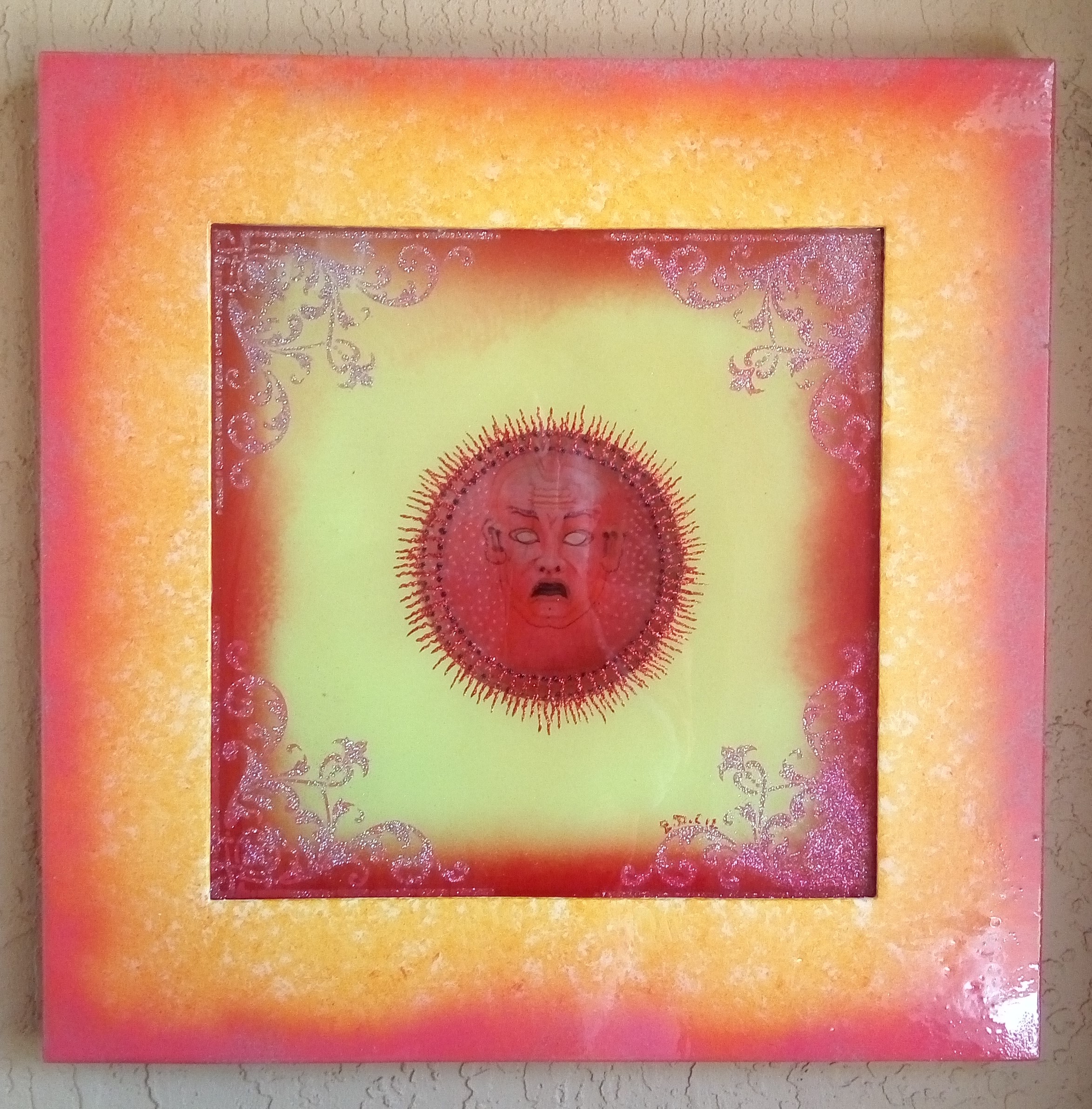
Wilson Bigaud (1931-2010) – Bigaud was known for his vibrant depictions of Haitian life and culture, with a particular focus on the countryside and its inhabitants. His paintings often feature scenes of daily life, such as farming, cooking, and playing music.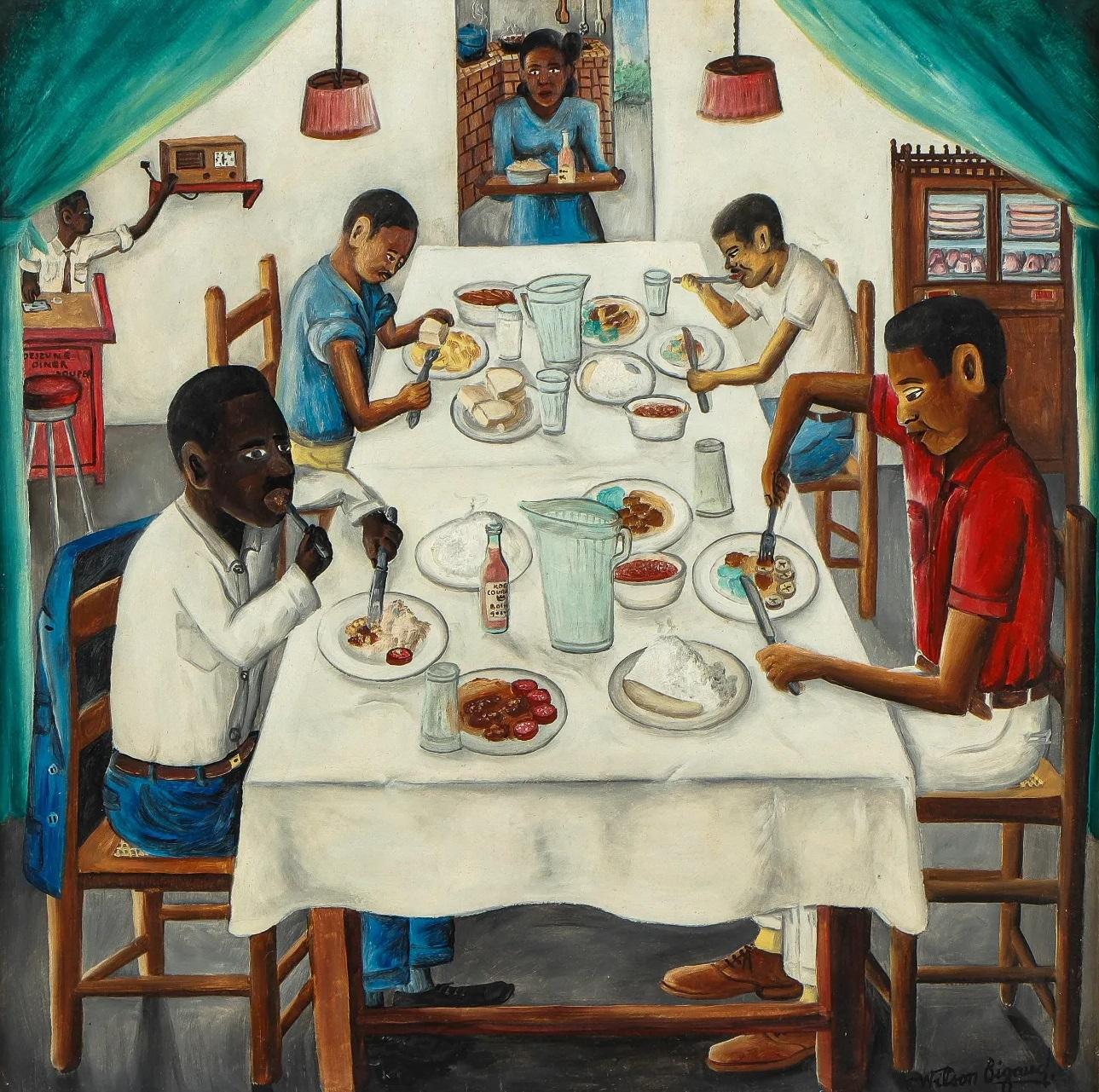
Affordable Haitian Art:
While some Haitian art can be quite expensive, there are also many affordable pieces available for collectors. Here are a few options to consider:
Hand-painted metal art – Haitian artists are known for their metalwork, which often features intricate designs and bright colors. Hand-painted metal art is a great way to start a collection, as it’s relatively affordable and can be found in a variety of styles.
Prints and posters – Many Haitian artists offer prints and posters of their work, which can be a more affordable way to collect their art. Look for prints that are signed and numbered by the artist, as these will retain their value over time.
Small paintings and sculptures – While larger pieces can be quite expensive, small paintings and sculptures can often be found for more affordable prices. Look for pieces that are well-crafted and feature the artist’s signature style.
Decorative items – Haitian art is not limited to paintings and sculptures – you can also find a wide variety of decorative items such as vases, bowls, and textiles. These items can add a touch of Haitian style to your home and can often be found at more affordable prices.
In conclusion, Haitian art is a rich and vibrant tradition that offers collectors a unique and colorful perspective on the world. Whether you’re interested in the work of renowned artists like Hector Hyppolite and Philomé Obin or are looking for more affordable pieces to start your collection, there are many options available online. By exploring the world of Haitian art, you can discover a new appreciation for this rich cultural heritage and bring a touch of Haitian style into your home.
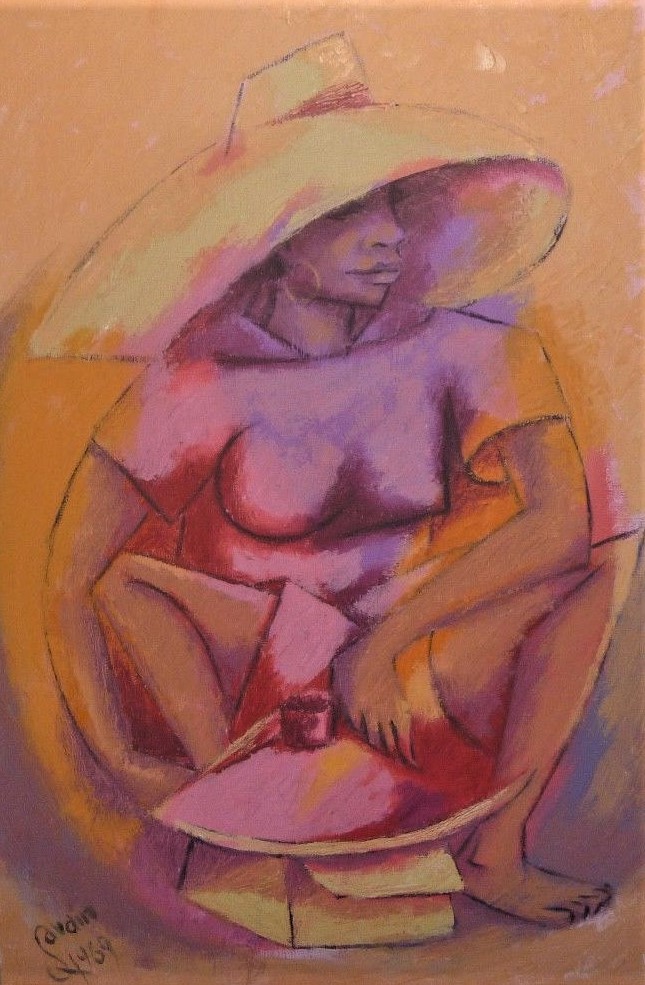
At an early age I was exposed to the arts, specially paintings and sculptures. Remember when my dad bought a piece from famous Petion Savain, our happy and amazed I was by the imagination and talent of the artist. This piece is still in our family collection. Well I am glad to share my passion and bring the opportunity to others to start their own collection. There is always a little corner or space inside the home or office in need of color and life.
TP. Martineau
On January 12, 2010, a devastating earthquake struck Port-au-Prince and its surrounding area and resulted in mass devastation. The Haitian art world suffered great loss. Museums and art galleries were extensively damaged, among them the Centre d’Art, the Monnin Gallery, and the Musee Nader in Pacot, Port-au-prince. The collection of priceless murals in the Holy Trinity Cathedral were also destroyed. Today the vitality of Haitian art both in Haiti and abroad is an astonishing reality. Today’s promising artists are numerous, such as Gregory Vorbe, Pascal Monnin, Albert Desmangles, Carel Blain, Frantz Zephirin, Patrick and marcel Jr Wah, Dominique D. Ambroise, and Fred Thomas, etc. And more than ever its future is assured.
